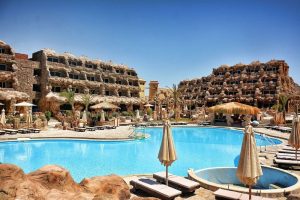The Lake District, nestled in Cumbria on England’s northwest coast, is a true natural gem. Just an hour from the Scottish border, this picturesque region is often compared to Cornwall in the south for its rural charm and quintessential English beauty.
A Land Shaped by Glaciers
The Lake District’s breathtaking lakes were formed during the last Ice Age when glaciers carved out the valleys now filled with water. It’s a place that effortlessly blends rugged landscapes with serene waters, offering something magical to every visitor.
My Journey to the Lakes
I was visiting friends in Lancaster when we decided to take a Sunday drive to the Lake District. With local guides to show me around, I couldn’t have asked for a better setup! As we headed north, the highways were busy with people returning from their weekend escapes, and it was easy to see why this place is so popular during the summer.
Exploring Ullswater
We began our journey at Ullswater, the second-largest lake in the region. Stretching almost 15 kilometers, this quiet, Z-shaped lake is surrounded by majestic hills and mountains. Its beauty has drawn visitors since the 1890s, especially for sailing and hunting. It’s often compared to Switzerland’s Lake Lucerne, and I could understand the comparison. The rugged terrain and scattered sheep farms reminded me of New Zealand’s Milford Sound but without the ice.
At the northern end of Ullswater, we stopped at Pooley Bridge Village, named after its quaint stone bridge. While the bridge itself wasn’t remarkable, the shallow river below it attracted kids playing in the chilly water.
Discovering Windermere
Next, we made our way to Windermere, England’s largest natural lake. Spanning 18 kilometers, it boasts 18 islands and has been a popular destination since the 1850s when new railways made it more accessible. However, as we traveled farther south, the area became noticeably busier. The crowds and traffic made me appreciate the quiet charm of the northern lakes even more. In fact, Windermere was so crowded that we couldn’t even find a parking spot and decided to skip stopping altogether.
The Scenic Kirkstone Pass
Driving through Kirkstone Pass was a highlight of the trip. The views were incredible, showcasing rolling hills, tiny streams, and hidden swimming holes. At the top of the pass, there’s even a cozy inn, home to one of England’s highest pubs. Once we crossed the pass, however, the southern Lake District became much more touristy, with houses, cars, and people everywhere.
The Surrounding Countryside
The areas around the Lake District are equally enchanting. Rolling green hills, ancient stone walls, and charming cottages create a picture-perfect countryside. It felt like stepping back in time, as if the locals had preserved this idyllic setting just for visitors. The timeless English charm of the region, combined with traditions like Sunday roasts, made the entire experience feel uniquely authentic.
Getting to the Lake District
Reaching the Lake District is straightforward. From London, you can take a National Express bus for 35–50 GBP, though the 10-hour journey might test your patience. Trains are faster, ta壯陽藥 king 4–6 hours, but tickets range from 50–200 GBP one way. If you’re coming from Edinburgh or Glasgow, the train ride is just over two hours and costs 40–90 GBP one way.
For the best experience, consider renting a car. Public transportation in the area is limited, and having a car allows you to explore the region at your own pace.
The Lake District is more than just a collection of stunning landscapes; it’s a slice of England at its most authentic. Whether you’re drawn to its tranquil lakes, rolling hills, or quaint villages, this region has a charm that stays with you long after you’ve left.







